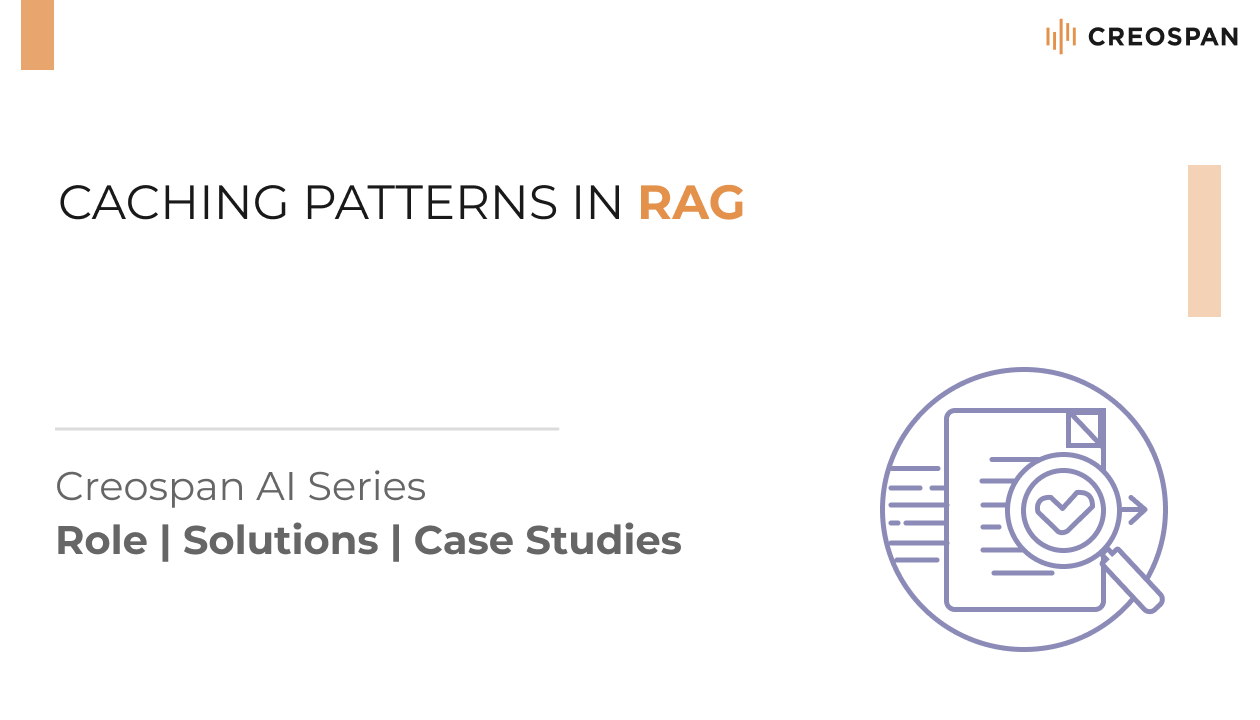Retrieval-Augmented Generation (RAG) systems are transforming the way we interact with large-scale language models by integrating external knowledge retrieval into the generation process. But as powerful as RAG is, it comes with its own performance challenges, especially when working with massive datasets and high query volumes.
One way to make RAG faster and more efficient? Caching.
By strategically caching data, RAG systems can reduce redundancy, speed up response times, and lower operational costs. Let’s break down the most effective caching patterns for RAG and the trade-offs you need to be aware of.
Key RAG Caching Patterns:
1. Knowledge Tree Caching:
Organizes intermediate states of retrieved knowledge in a hierarchical structure, caching them in both GPU and host memory.
Benefits: Efficiently shares cached knowledge across multiple requests, reducing redundant computations and speeding up response times.
2. Semantic Caching:
Identifies and caches similar or identical user requests. When a matching request is found, the system retrieves the corresponding information from the cache. This is the most popular one that is readily available with fully managed cloud service providers.
Benefits: Reduces the need to fetch information from the original source, improving response times.
3. Chunk-Based Caching:
Breaks down large documents into smaller chunks and caches these chunks individually.
Benefits: Improves retrieval speed and accuracy by focusing on smaller, relevant sections of the document.
4. Multilevel Dynamic Caching:
Implements a multilevel caching system that dynamically adjusts based on the characteristics of the RAG system and the underlying hardware.
Benefits: Optimizes the use of memory and computational resources, enhancing overall system performance.
5. Replacement Policies
Uses intelligent replacement policies to manage the cache, ensuring that the most relevant and frequently accessed data is retained.
Benefits: Maintains cache efficiency and relevance, reducing the likelihood of cache misses.
These caching patterns help RAG systems manage and retrieve large volumes of data more efficiently, leading to faster and more accurate responses.
For any RAG implementation we have to prep and plan the pitfalls:
Retrieval-Augmented Generation (RAG) Caching Pattern Pitfalls:
Consistency Issues: Ensuring consistency between the cached data and the source data can be challenging, especially in distributed systems.
Complexity: Implementing RAG caching patterns can be complex due to the need to manage both retrieval and generation components effectively. This complexity can lead to higher development and maintenance costs.
Latency: While caching can reduce retrieval times, it may introduce latency in scenarios where the cache needs to be updated frequently. This can affect the overall performance of the system.
Storage Overhead: You cannot cache without an additional storage, which can be significant depending on the size and frequency of the data being cached.
Staleness: Cached data can become outdated, leading to the generation of responses based on obsolete information. This is particularly problematic in dynamic environments where information changes rapidly.
Conclusion
Even though these patterns are effective in reducing costs and improving response times, they have to be thoroughly validated to ensure the objectives of the RAG implementation are met with effective invalidation techniques like Staleness. Implement a Semantic pattern first and test the model’s ability, then try out other options.
Article written by Krishnam Raju Bhupathiraju.

